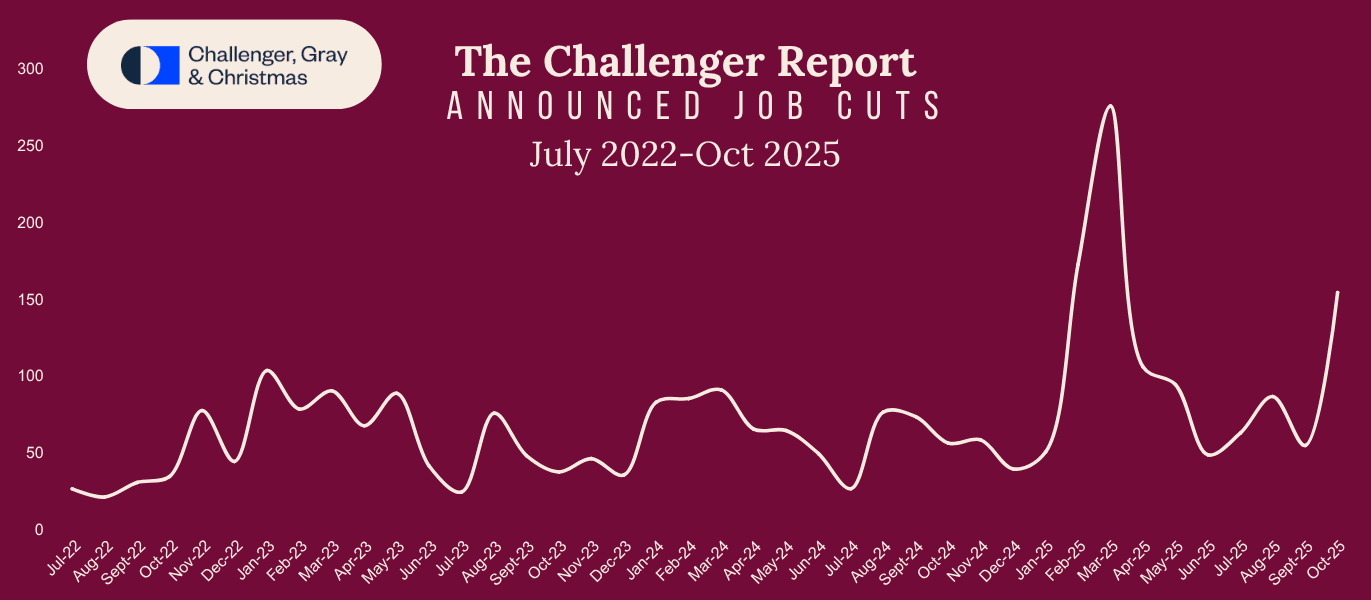
Image © Adobe Images
The Federal Reserve will cut interest rates to cushion an economy hit by technology's advance.
U.S. companies are laying off workers and slowing new hiring, and it's down to Artificial Intelligence.
This is according to the latest Challenger, Gray and Christmas survey of job losses; October saw U.S. employers announce 153,074 job cuts, up 175% y/y and 183% m/m.
"This is the highest total for October in over 20 years, and the highest total for a single month in the fourth quarter since 2008. Like in 2003, a disruptive technology is changing the landscape," says Challenger.
For context, this is the worst deterioration since the pandemic and comes as companies make the fewest new hires since 2011 (488K).
"Welcome to the age of AI," says Kit Juckes, head of FX analysis at Société Générale. "Cornering of resources by low-employment industries at the expense of the common people is as old as time."
The data signals the Federal Reserve has fertile ground to cut interest rates again in December, which would weigh on the dollar.
However, the dollar sits near multi-week highs, apparently unfazed by these developments.
"The markets don’t care much, because the official employment data aren’t available," explains Juckes.
With all official U.S. data being put on hold by the U.S. government shutdown, investors are left trawling private sector surveys for clues.
Nevertheless, all signs point to a downshift in the labour market when official data finally comes back online.
"In the long run, the US economy is set to go on out-performing, but in the next few months, the jobs lost to AI will knock on to stores, bars, car showrooms and anywhere else the unemployed don’t spend their money. And the only way to spur on new demand and help create new jobs, may be to cut rates further," says Juckes.
The dollar has strengthened over recent weeks as markets see diminishing odds of a December rate hike and there's simply no trigger to budge the notion that the Fed is paralysed by a lack of official data.
But surely, at some point, the weight of the surveys will convince the market that the official data is heading in only going to head in one direction. For the dollar, this implies downside risks.

